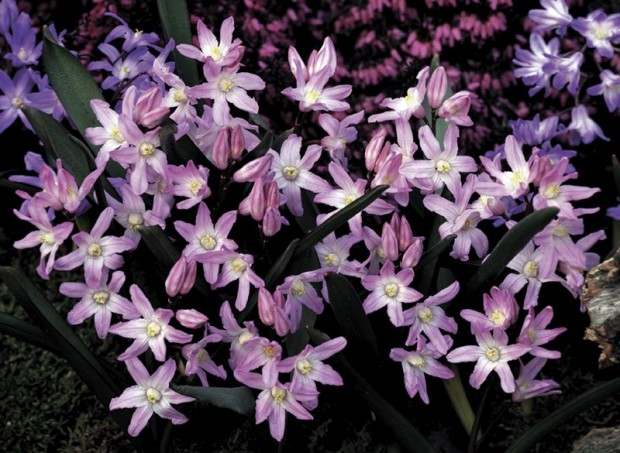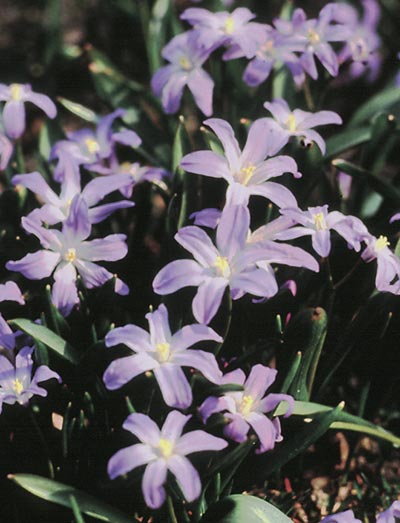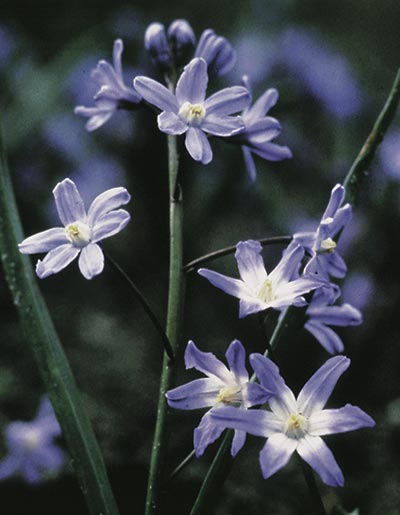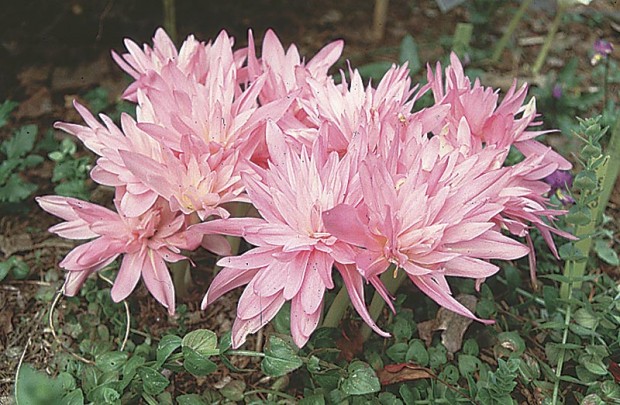Each year I plan, purchase and plant thousands of bulbs. Here’s what I’ve learned to do in fall to insure the best show of spring bulbs.

Think “grocery produce section” when selecting bulbs
When you choose bulbs in person at the local garden center, you have a significant advantage: you have direct control over quality. Make the most of it. Pretend you’re at a grocery store choosing vegetables, because that’s what bulbs are—root crops.
You would think twice about buying a mushy potato, rubbery carrot or shriveled onion. Be just as choosy with bulbs. Select for firmness and even color. Check for soft spots that may be on their way to rotting, and reject bare-root ephemerals like foxtail lily (Eremurus) if they have broken roots. Take the largest of any bunch.
Keep the same mindset if you must store bulbs before planting. If the bulb has a tunic (a papery skin as on a tulip, daffodil, crocus, etc.) or a horny surface (such as snowdrops and spring-blooming anemone), store it cool and dry like you would store onions or garlic. If it does not have a protective covering, like a true lily or a bare foxtail lily root, keep it as you would carrots—cool and humid in a refrigerator crisper drawer or root cellar. If it’s wrapped, make sure that condensation doesn’t collect and puddle inside to incite rot on the surface of the bulb or root.
About price: Bargain basement bulbs are usually disappointing. If you buy the cheapest, you’re almost certain to receive bulbs half the size of premium items. They may be dry and wasted from improper storage. Given years of ideal conditions, such bulbs may produce a decent display. Next spring, however, they’ll present flowers few and small.
Beware of low-priced collections too. Whether of mixed varieties of one species or a “spring collection” of different species, they rarely live up to their promise. The catalog may illustrate a mix of six types of daffodil or tulip yet ship just 5 of the fancier types to each 45 of a pale, small-flowered type. The mixed-species collections often contain only a few of each big, showy species (hyacinths, daffodils, tulips) but many of each minor bulb (squill, winter aconite, glory-of-the-snow, etc.). They sometimes include downright weedy species such as star of Bethlehem (Ornithogalum umbellatum).
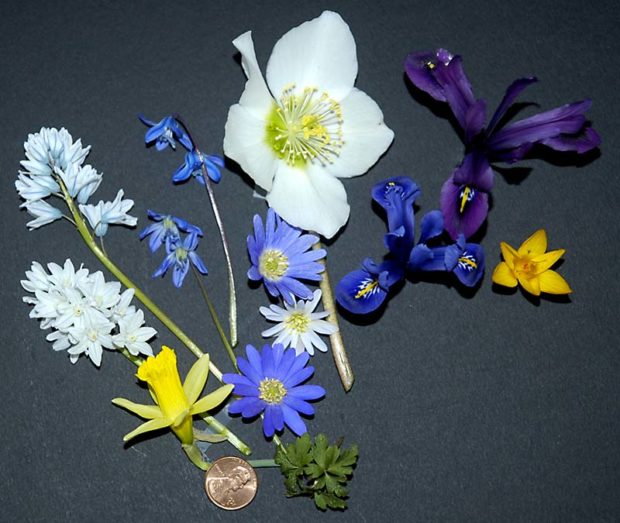
Include early-, mid- and late-blooming types
You can enjoy spring bulb bloom from early March until early June. Most crocuses come early in that line-up, followed by Dutch hyacinth and daffodils in April, and tulips from late April into May. Alliums, foxtail lily and others carry the show into June. Within each group, however, there are early-, mid-, and late-blooming species and varieties. Take the time in fall to plan a mix that will give you spring color every week that’s important to you. (See the sidebar “Parade of bloomin’ bulbs” for a starting line-up.)
Short on space? You can plant two, three or even four kinds of bulbs in one area if you choose for separate seasons and give all players elbow room. For instance, I have planted squill, early species tulip (Tulipa kaufmanniana), checker lily (Fritillaria meleagris), and drumstick allium (Allium sphaerocephalon) in one spot. I excavated that bulb area about 10 inches deep and placed the tulips, then added a few inches of soil and set the checker lilies and drumstick alliums. Finally I added another inch of soil, scattered the squill and covered it all with the rest of the soil.

Plant them where you’ll see them
Before you plant, stand in the windows you use most in late winter and early spring. Look at your garden from there and from the driveway where you enter and exit. Plant spring bulbs where you will be able to see them from these vantage points or you’re wasting your time and money.
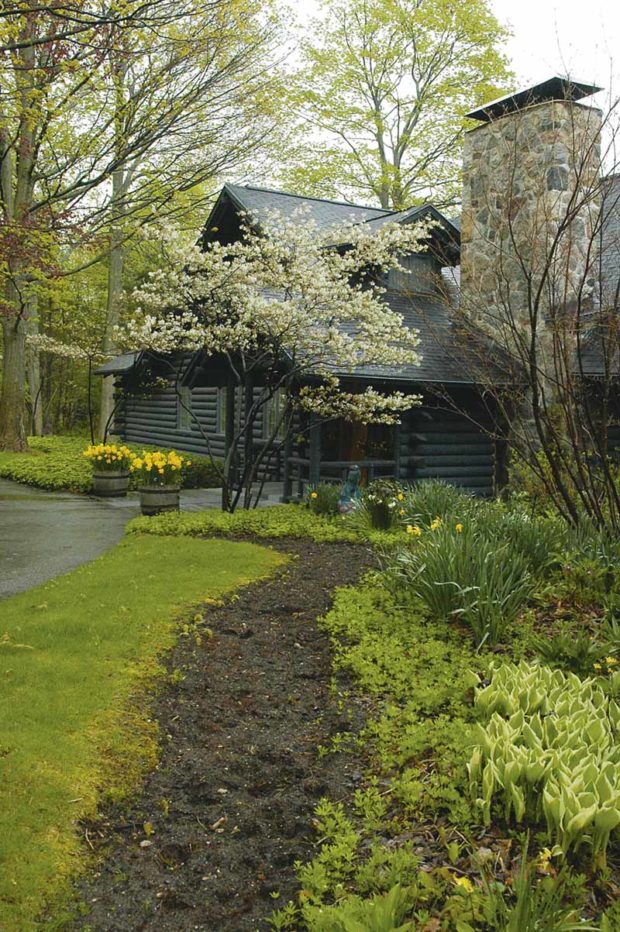
Plant them deep
The rule of thumb for bulb depth is to set a bulb with soil over its nose 2 to 3 times as deep as the bulb is tall. That means to plant a tulip, daffodil, lily or large allium, you need a hole 8 or 9 inches deep. That will accept the three-inch bulb plus at least six inches of soil above it. Most people plant shallow and pay for it in frost damage, toppling flowers and blooms that come one year then never again.
I plant even deeper than recommended. I put large bulbs in holes at least 11 inches deep. If the drainage is good, they don’t mind at all, and need dividing less often. Plus, I won’t harm them as I garden because they’re all below the reach of my nine-inch spade blade.
Doubtful? Experiment with just a few bulbs planted deeper this fall. Note what you planted deep, where, so you can gauge the results next spring. I still do, since I’m not sure I’ve pushed it to the limit, in terms of depth. One fall, after planting a dozen tulips a foot deep, I forgot all about them and later dumped a wheelbarrow of soil there and topped that with a leftover bale of straw. The next spring, the tulips grew from a foot down, through the piled soil, plus 14 inches of baled straw to bloom cheerily above the heap.
That just goes to show that there’s no absolute right or wrong when it comes to using bulbs or any other aspect of gardening. Take that to heart as you plan and plant bulbs this fall. Have fun, and enjoy the surprises spring will bring.
Parade of bloomin’ bulbs
Here’s a list of which bulbs are likely to bloom when, with what. To use it, remember it’s only a guide—winter and spring weather can slow one bulb and speed another—and adjust for length of growing season. It’s geared to use in northern zone 5, where the growing season starts later than it does in a more southern zone 5 but earlier than on the Lake Superior shore zone 5. So change mid-March to early March if you’re in zone 6, or to late February for a zone 7 North Carolina winter home.
Very early (by mid-March): Snowdrops (Galanthus), early crocus (Crocus sieberi, C. minimus, C. tommasinianus), danford and netted iris (Iris danfordiae, I. reticulata).
Early (late March to mid-April): Grecian windflower and wood anemone (Anemone blanda, A. nemerosa), squill (Scilla sibirica), Puschkinia libanotica, Dutch crocus, Dutch hyacinth, early- and mid-season daffodils, firespray- and tarda tulips (Tulipa praestans, T. dasystemon), glory-of-the-snow (Chionodoxa).
Mid-season (late April and early May): Late daffodils, early tulips (Triumph, Foster, multi-flora, and Greigii tulips followed by lily-flowered and fringed types), western trout lily (Erythronium ‘Pagoda’), checker lily (Fritillaria meleagris), summer snowflake (Leucojum‘ Gravetye’), grape hyacinth (Muscari).
Late (mid- to late May): Late and parrot tulips, species tulip (Tulipa wilsoniana), quamash (Camassia), large-flowered alliums, sego lily (Calochortus), perennial glads (Gladiolus byzantinus), bluebells (Hyacinthoides campanulata).
Very late (end of May and into June): Sicilian honey lily (Nectaroscordum siculum), foxtail lily (Eremerus), drumstick and blue allium (Allium sphaerocephalon, A. caeruleum), California hyacinth (Triteleia laxa, Brodiaea).
Article by Janet Macunovich and photos by Steven Nikkila, www.gardenatoz.com.
RELATED: Moving spring flowering bulbs
RELATED: Plant Focus – Crocus

